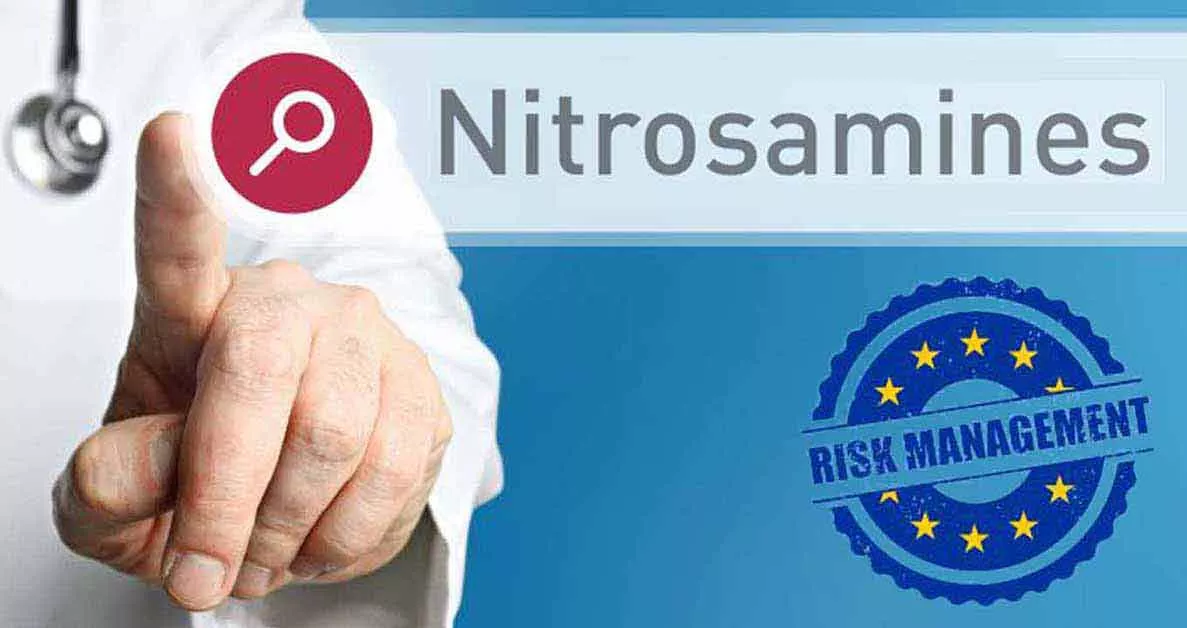
ProductLife Group Offers Expert Support with Nitrosamine Risk Assessment
28 february 2022

PLG Offers Expert Support with Nitrosamine Risk Assessment
Since mid-2018 when EU regulators were first alerted to the presence of nitrosamine impurities in blood pressure medicines, there has been a pressing need to remove the risk to patients. Nitrosamines are classified as probable human carcinogens based on animal studies.
As such, the European Medicines Agency (EMA) completed a review in June 2020 under Article 5(3) of Regulation (EC) No 726/2004 to advise marketing authorization holders (MAHs) on risk measures to address nitrosamine impurities, including N-nitrosodimethylamine. The FDA and other health authorities have taken a similar approach. The Committee for Human Medicinal Products asked MAHs to review all chemical and biological human medicines for the possible presence of nitrosamines and to test products at risk.
Companies are required to have appropriate control strategies to prevent or limit the presence of these impurities and, where necessary, to improve their manufacturing processes. A three-step approach was proposed by the authority.
Step 1 Risk Evaluation – The outcome of a risk evaluation to identify active substances and finished products at risk of N-nitrosamine contamination was required to be reported by 31 March 2021 for chemical medicines and 1 July 2021 for biological medicines.
Step 2 Confirmatory Testing – If a risk was identified in Step 1, confirmatory testing on the products should be performed and the confirmed presence of nitrosamines above the acceptable levels reported as soon as possible.
Step 3 Update of Marketing Authorization – When testing performed in Step 2 confirms the presence of nitrosamines, the MAH must control the limits in the API, and/or make any necessary changes to the manufacturing process of the finished product (including packaging), to remove the nitrosamines risk. This is done by requesting a variation to the marketing authorization. The MAH should complete the confirmatory testing and submit their variation applications by 26 September 2022 for chemical medicines and 1 July 2023 for biological medicines. To meet these deadlines, MAHs must perform the step 2 confirmatory testing activities well in advance.
ProductLife Group can help MAHs ensure they conform with the requirements in several ways:
Step 2 Confirmatory Testing
Our regulatory teams have expertise in compilation, format, content, evaluation and review of the Step 2 report, including:
- Submission of the Step 2 – No nitrosamine response template
- Submission of the Step 2 – Nitrosamine detected response template
- Submission of the Step 2 – Nitrosamine detected above acceptable intake or new nitrosamine detected response template
We also have expertise in:
- Analytical methodology with the appropriate sensitivity for the testing of nitrosamines
- Recommendation of Contract Laboratories for the testing of nitrosamines
- Evaluation of suitable approaches when either a single new (unknown) nitrosamine is identified, or more than one nitrosamine is identified
- Interpretation of the results of confirmatory testing with reference to the limit of quantitation of the method and the acceptable limit for the nitrosamine impurity
- Scenario setting following confirmatory testing, according to the relevant EMA guideline.
Step 3 Update of Marketing Authorization – Variation
Expertise in compilation, format, content, evaluation, and review of the Step 3 report, including:
- Evaluation of a nitrosamines control strategy by variation
- Classification of the changes involved (updated API or finished product specification and/or updated API or finished product manufacturing process)
- Recommendation of a suitable variation submission strategy (single variations or appropriate groupings)
- Co-ordination between the MAH and the API and/or finished product manufacturer or CMO, to obtain the technical information for presentation of the change
- For changes involving APIs authorized via certificate of suitability applications or through the active substance master file procedure
- Preparation of the variation package, module 1 and Module 3, eCTD compilation and submission.
- Follow-up of the variation procedure and integration with the Step 3 report.
Step 3 Update of Marketing Authorization – Referral
If the N-nitrosamine presence is confirmed to be intrinsic to the API (e.g. a structural feature or a metabolic formation) and/or if additional root causes for the presence of nitrosamines are reported and require further extensive assessment, then the regulatory authority may initiate a referral procedure. Again, these are assessments that ProductLife Group can assist with.
Contact us to find out how we can help you manage all the complexities surrounding nitrosamine contamination.
Register to our news and events
Go to our Events to register
Go to our News to get insights
